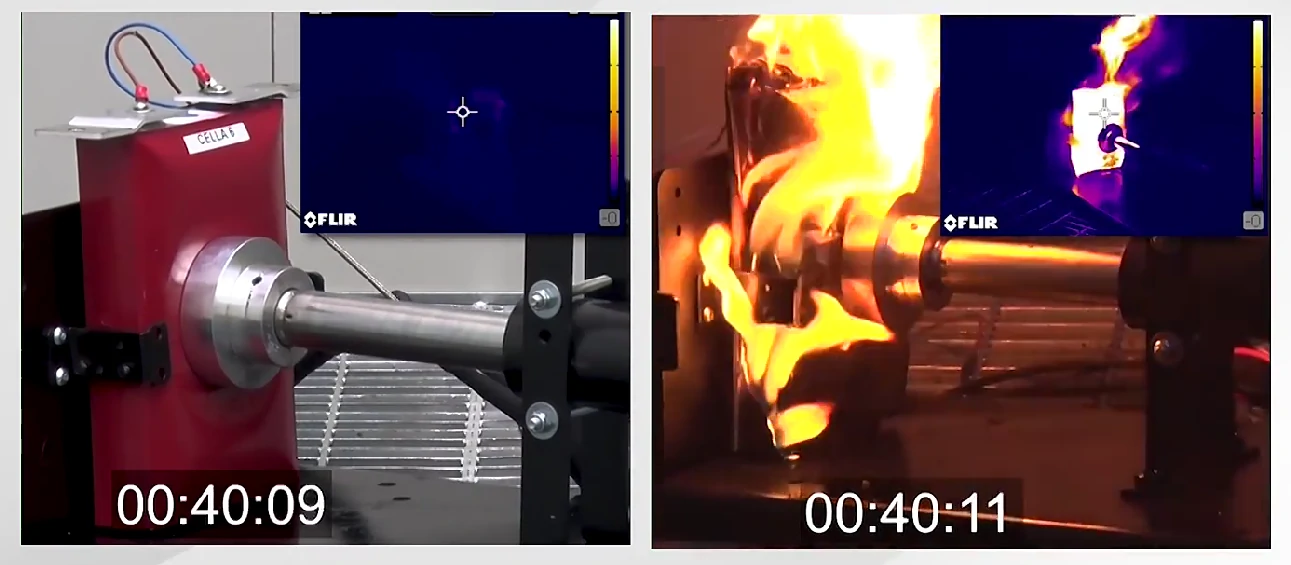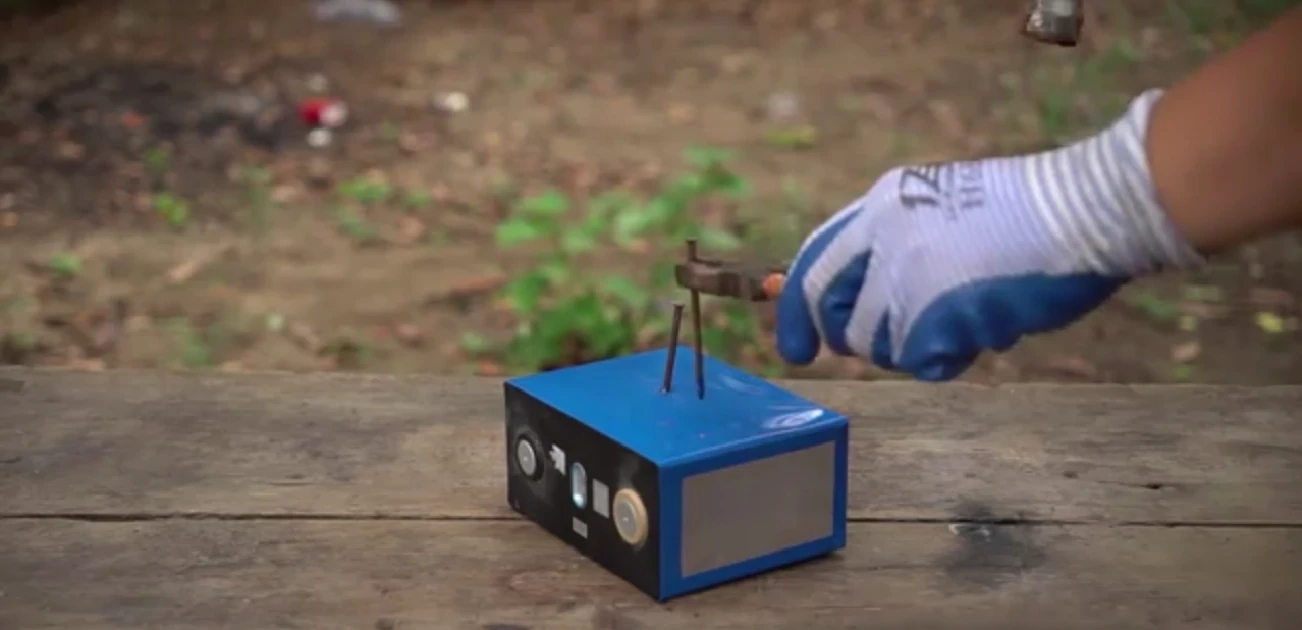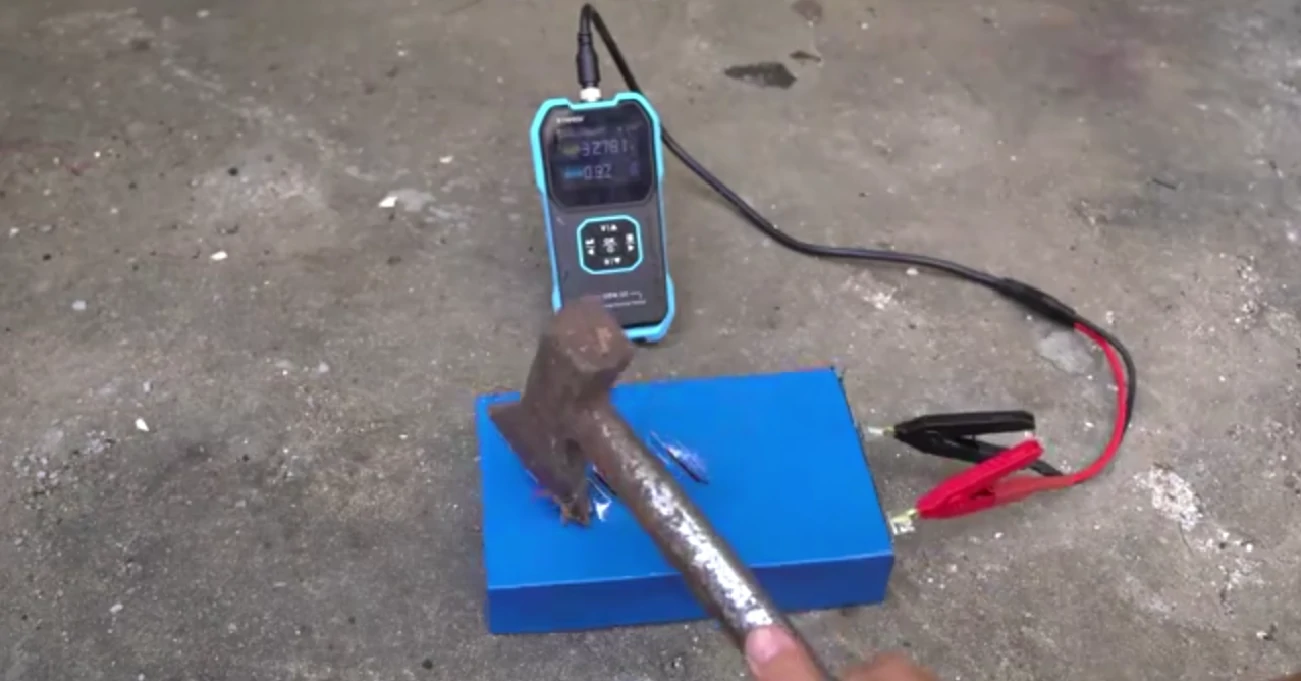In recent years, lithium iron phosphate (LiFePO4) batteries have become a prominent choice in home energy storage systems, VPPs, and EVs due to their high energy density, long cycle life, and widely promoted safety features. But what makes them the safest lithium batteries? This article will list some safety tests conducted on LiFePO4 batteries to explore their safety in detail.
(Note: These tests are conducted in controlled environments to demonstrate LFP safety, and are not a reflection of any specific manufacturer’s product quality. Do not attempt to replicate these tests.)
Battery Safety Standards
Before diving into the topic, let’s briefly go over the safety standards for LiFePO4 batteries:
- Short Circuit: No fire, no explosion.
- Overcharging: No fire, no explosion.
- Thermal Box Test: No fire, no explosion (150°C constant temperature for 10 minutes).
- Nail Penetration: No explosion (penetrating the battery with a 3mm nail).
- Flat Impact: No fire, no explosion (10kg weight dropped from 1 meter onto the battery).
LiFePO4 Battery Safety Testing
Now, we move into the various safety tests conducted on LiFePO4 batteries. The following tests are performed by professionals in controlled environments to demonstrate the safety features of these batteries. Please do not attempt to replicate these tests.
LiFePO4 Battery Nail Penetration Test
The nail penetration test is considered the “Mount Everest” of battery safety tests. When the separator is pierced, the positive and negative electrodes come into direct contact, causing a chemical reaction that releases significant energy.
In the video, the LFP battery shows no visible temperature change after being pierced, unlike other batteries that catch fire.
Nail penetrates LFP battery Test
The video shows a nail being hammered into a lithium iron phosphate battery. The battery does not produce smoke or burn, only electrolyte liquid seeps out.
Axe-strike LFP battery
In another set of experiments, the battery produced a lot of smoke after being chopped. Although there was no flame, the temperature was as high as 330°C, which means that although lithium iron phosphate batteries have high safety, they are not absolutely safe.
Conclusion
While LFP batteries are highly safe and withstand extreme tests, they are not completely immune to hazards. They may still generate high temperatures, which can ignite nearby materials.
For more high-quality LiFePO4 solar batteries, visit PKNERGY to explore safe, value-driven options.






